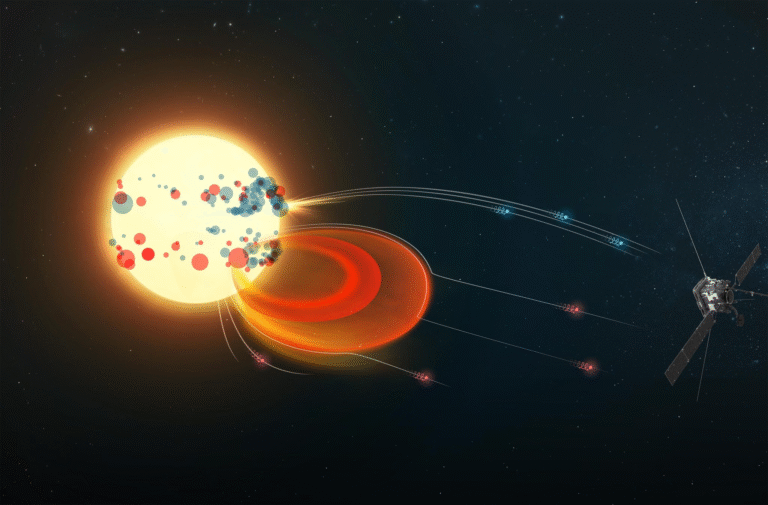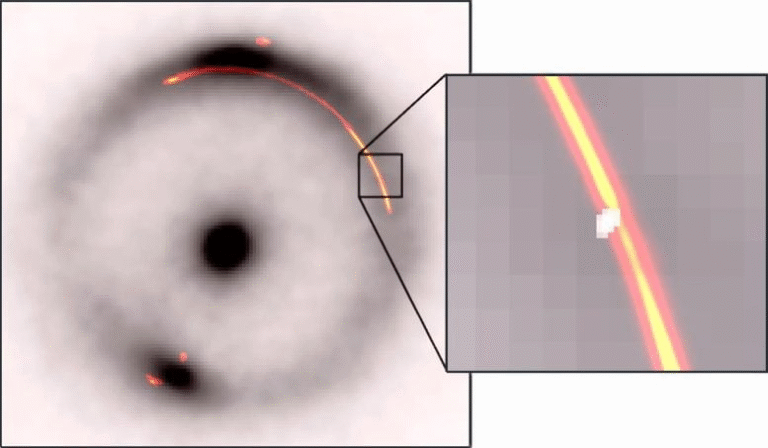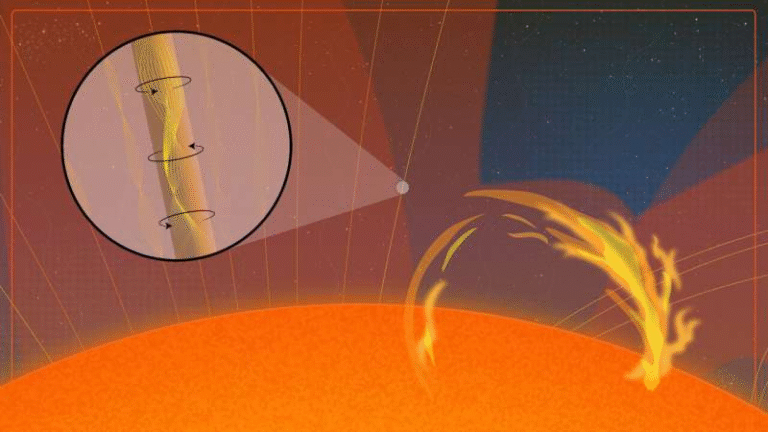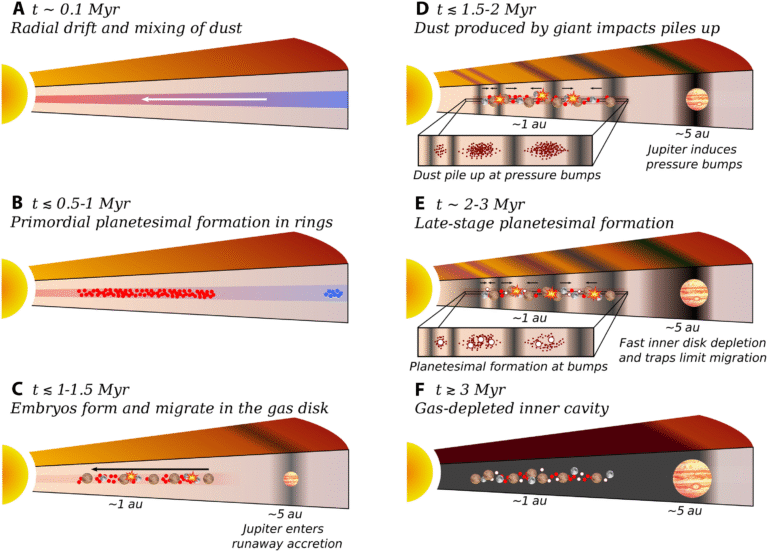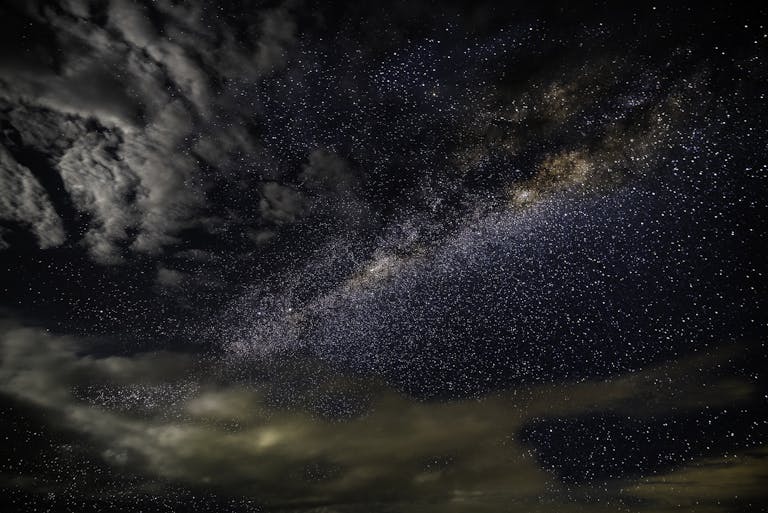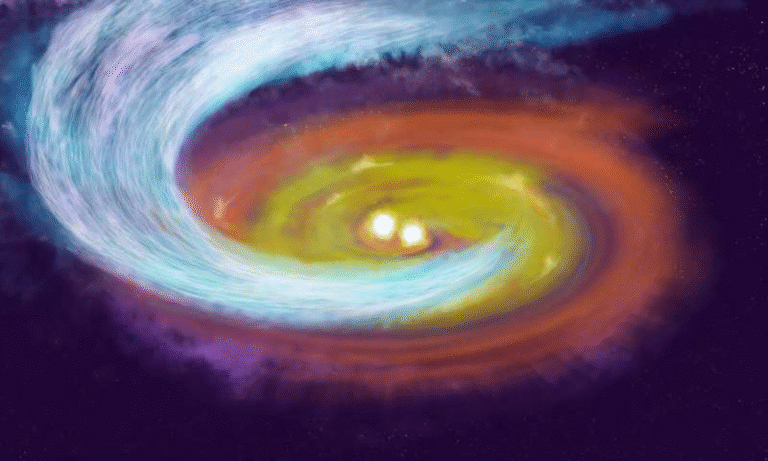A Giant Black Hole Found Inside One of the Smallest Galaxies Ever Discovered

Astronomers have made an incredible discovery in one of the faintest and smallest galaxies near the Milky Way. The galaxy, called Segue 1, appears to host a massive black hole at its center—one so large that it outweighs all the stars in the galaxy combined. This unexpected finding challenges long-held ideas about how dwarf galaxies form and what holds them together.
What Makes Segue 1 So Special
Segue 1 is a tiny dwarf galaxy located about 75,000 light-years away from Earth, making it one of the Milky Way’s closest galactic neighbors. It’s incredibly faint and contains only a few hundred stars, scattered loosely across space. Because there aren’t enough stars to generate enough gravity to hold the galaxy together, astronomers have long believed that dark matter—the mysterious invisible substance thought to make up most of the universe’s mass—was providing the gravitational glue keeping Segue 1 intact.
This assumption has now been thrown into question. A new study conducted by researchers from The University of Texas at Austin and The University of Texas at San Antonio (UTSA) suggests that Segue 1’s stars are not bound by dark matter at all. Instead, their motions point to something far more compact and powerful: a black hole roughly 450,000 times the mass of our Sun.
How Astronomers Found It
The discovery comes from a joint astronomy course taught by astrophysicists Karl Gebhardt (UT Austin) and Richard Anantua (UTSA). As part of the class, students modeled how gravity influences the motion of stars inside Segue 1 using advanced computer simulations.
To perform the study, the team used supercomputers at the Texas Advanced Computing Center (TACC), creating hundreds of thousands of models to test different possibilities. They considered models that included a dark matter halo, a central black hole, both, or neither. The goal was simple: find the setup that best matches the real observed movements of Segue 1’s stars as seen through the W.M. Keck Observatory in Hawaii.
Before building their models, the researchers needed to separate stars that truly belong to Segue 1 from those affected by the Milky Way’s tidal forces. Because Segue 1 is so close to our galaxy, the Milky Way’s gravity is actively pulling stars away from it—a process known as tidal stripping. These stripped stars are spread across the galaxy’s outer edges, so the team subtracted their influence to focus only on the stars still gravitationally bound to Segue 1 itself.
When the models were run, one result stood out. The stars near the center of Segue 1 were moving in tight, fast orbits, suggesting that something extremely dense was lurking there. The model that best matched the data included a giant black hole but little or no dark matter.
The Numbers Behind the Discovery
The estimated black hole mass is around 450,000 solar masses. To put that into perspective, that’s about ten times more massive than all the stars in Segue 1 combined. Usually, in larger galaxies like the Milky Way, the central black hole’s mass is only a small fraction of the total stellar mass. This makes Segue 1’s ratio highly unusual.
The study found that models using only dark matter or a combination of dark matter and a small black hole didn’t fit the observed star movements nearly as well. Including the black hole alone created a realistic pattern where stars near the center orbit rapidly, while those farther away move more slowly—exactly what astronomers would expect if a black hole were dominating the galaxy’s gravity.
What This Means for Dwarf Galaxies
If the finding holds up under further scrutiny, it could transform how astronomers think about dwarf galaxies. Traditionally, such galaxies are seen as excellent laboratories for studying dark matter, since they are believed to contain far more dark matter than visible stars. If some of them instead owe their structure to massive central black holes, it would mean that dark matter isn’t always necessary to explain their stability.
This has far-reaching consequences. Astronomers might need to revisit previous models of dwarf galaxies, re-analyzing whether certain systems truly require dark matter or could be explained by massive black holes instead.
It also raises new questions about how black holes form. In most galaxies, there’s a known correlation between the size of a galaxy and the mass of its central black hole—the bigger the galaxy, the bigger the black hole. But in Segue 1, that rule is broken. The galaxy’s black hole is proportionally enormous compared to its tiny stellar population.
Possible Explanations for Segue 1’s Odd Behavior
Researchers have proposed a few ideas to explain how Segue 1 ended up this way. One possibility is that it used to be a much larger galaxy, but over billions of years, the Milky Way’s gravity stripped away most of its stars, leaving behind only a small remnant around the original black hole.
Another possibility is that Segue 1 belongs to a new type of galaxy similar to what astronomers call “Little Red Dots.” These are recently discovered compact galaxies in the early universe that appear to contain massive black holes and very few stars. Because those distant objects are hard to observe in detail, Segue 1 might serve as a nearby analog, letting scientists study these processes much more closely.
A Word on the Technology and Collaboration
This study stands out not only for its scientific result but also for how it was done. The work came out of a university classroom project where students used professional-level tools and datasets. The fact that a hands-on teaching effort led to a potentially major discovery highlights how collaboration between universities can drive meaningful research.
Using TACC’s supercomputers allowed the team to simulate hundreds of thousands of gravitational scenarios, something that would be impossible on a standard computer. Each simulation mapped how stars would move under different conditions—such as varying black hole masses, the presence or absence of dark matter, and different assumptions about how tidal stripping affects the galaxy.
What Comes Next
The discovery, while exciting, still needs independent verification. Segue 1 contains so few stars that any model of its internal motion relies on limited data. Future work may involve collecting more precise velocity measurements of its stars or observing similar ultra-faint galaxies to see whether they also show signs of central black holes.
If more examples are found, this could mark the beginning of a new understanding of galaxy formation—one where massive black holes play a bigger role even in the smallest galactic systems.
A Quick Refresher: What Exactly Is a Dwarf Galaxy?
A dwarf galaxy is a small galaxy composed of a few thousand to a few billion stars—much fewer than the Milky Way, which has over 200 billion. Dwarf galaxies often orbit larger ones as satellites. Some are spherical (like Segue 1), while others are irregularly shaped.
Because they’re small and faint, dwarf galaxies are particularly useful for studying dark matter. Many have extremely high mass-to-light ratios, meaning they appear to contain far more mass than their visible stars can account for. Until now, this excess mass was usually interpreted as evidence for dark matter. But discoveries like Segue 1 suggest there might be other explanations in at least some cases.
The Bigger Picture
If Segue 1 truly hosts a black hole ten times more massive than all its stars combined, it could force astronomers to rethink the early stages of galaxy evolution. Perhaps, in the young universe, black holes formed first, attracting only a small number of stars around them. That idea fits with new telescope observations showing compact, red, star-poor galaxies at extreme distances—objects possibly similar to what Segue 1 once was.
For now, Segue 1 remains a fascinating mystery: a tiny, dim galaxy bound by a giant, invisible force. Whether that force comes from dark matter, a massive black hole, or some combination of both, it’s clear that this small system has opened a big new window into how galaxies—and the universe itself—might work.
Research Reference:
Nathaniel Lujan et al., Modeling the “Dark-Matter Dominated” Dwarf Galaxy Segue 1 with a Supermassive Black Hole, The Astrophysical Journal Letters (2025)
